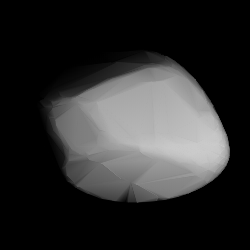826 Henrika is a background asteroid from the central regions of the asteroid belt. It was discovered by German astronomer Max Wolf at the Heidelberg-Königstuhl State Observatory on 28 April 1916. The carbonaceous C-type asteroid has a rotation period of 5.98 hours and measures approximately 21 kilometers in diameter. Any reference to the origin of the asteroid's name is unknown.

868 Lova is a large and dark background asteroid, approximately 51 kilometers in diameter, from the central regions of the asteroid belt. It was discovered by German astronomer Max Wolf at the Heidelberg-Königstuhl State Observatory on 26 April 1917. The carbonaceous C-type asteroid (Ch) and has a long rotation period of 41.1 hours and is likely elongated in shape. The origin of the asteroid's name remains unknown.

885 Ulrike is an elongated Themistian asteroid from the outer regions of the asteroid belt. It was discovered on 23 September 1917, by Soviet astronomer Sergey Belyavsky at the Simeiz Observatory on the Crimean peninsula. The presumed C-type asteroid has a short rotation period of 4.9 hours and measures approximately 33 kilometers in diameter. It was likely named after Ulrike von Levetzow, last love of Goethe.
931 Whittemora is a metallic background asteroid, approximately 46 kilometers in diameter, located in the outer region of the asteroid belt. It was discovered by French astronomer François Gonnessiat at the Algiers Observatory in North Africa on 19 March 1920. The M-type asteroid has a rotation period of 19.2 hours. It was named after American archaeologist Thomas Whittemore (1871–1950).
948 Jucunda is a background asteroid, approximately 17 kilometers in diameter, located in the outer region of the asteroid belt. It was discovered on 3 March 1921, by astronomer Karl Reinmuth at the Heidelberg-Königstuhl State Observatory in southwest Germany. The asteroid has a longer-than average rotation period of 26.2 hours. It was named after a common German female name, unrelated to the discoverer's contemporaries, that was taken from the almanac Lahrer Hinkender Bote.

979 Ilsewa is a background asteroid from the outer regions of the asteroid belt, approximately 36 kilometers in diameter. It was discovered by German astronomer Karl Reinmuth at the Heidelberg-Königstuhl State Observatory on 29 June 1922. The uncommon T-type asteroid has a longer-than average rotation period of 42.6 hours. It was named after Ilse Walldorf, an acquaintance of the discoverer.
985 Rosina, provisional designation 1922 MO, is a stony asteroid and sizable Mars-crosser on an eccentric orbit from the inner regions of the asteroid belt, approximately 8 kilometers in diameter. It was discovered on 14 October 1922, by astronomer Karl Reinmuth at the Heidelberg-Königstuhl State Observatory in Germany. The asteroid's name is a common German female name, unrelated to the discoverer's contemporaries.
1048 Feodosia, provisional designation 1924 TP, is a carbonaceous asteroid from the middle region of the asteroid belt, approximately 70 kilometers in diameter.

1116 Catriona is a carbonaceous asteroid from the outer regions of the asteroid belt, approximately 39 kilometers in diameter. It was discovered on 5 April 1929, by South African astronomer Cyril Jackson at the Union Observatory in Johannesburg. The asteroid was probably named after the 1893-novel Catriona by Robert Louis Stevenson.
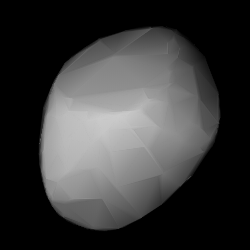
1107 Lictoria is a large Hygiea asteroid, approximately 79 kilometers in diameter, from the outer regions of the asteroid belt. It was discovered by Luigi Volta at the Pino Torinese Observatory in 1929, and named after the Fasces Lictores, Latin for "Fasci Littori", the symbol of the Italian fascist party.

1111 Reinmuthia is a very elongated asteroid from the background population, located in the outer region of the asteroid belt. It was discovered on 11 February 1927, by German astronomer Karl Reinmuth at the Heidelberg Observatory in southwest Germany. The F-type asteroid (FX) has a short rotation period of 4.02 hours and measures approximately 40 kilometers in diameter. It was later named in honor of Karl Reinmuth, the discoverer himself.

1126 Otero, provisional designation 1929 AC, is a rare-type Florian asteroid from the inner regions of the asteroid belt, approximately 10 kilometers in diameter. It was discovered on 11 January 1929, by German astronomer Karl Reinmuth at Heidelberg Observatory in southwest Germany. It was named after Spanish courtesan Carolina Otero.
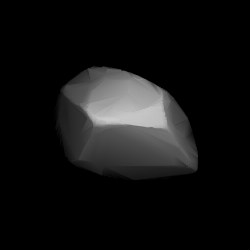
1127 Mimi is a dark background asteroid from the central regions of the asteroid belt. It was discovered on 13 January 1929, by Belgian astronomer Sylvain Arend at the Royal Observatory of Belgium in Uccle. The carbonaceous C-type asteroids (CX) has a rotation period of 12.7 hours and measures approximately 47 kilometers in diameter. Through a glitch in the naming process, the asteroid received the name "Mimi" instead of "Robelmonte" as originally intended by the discoverer.
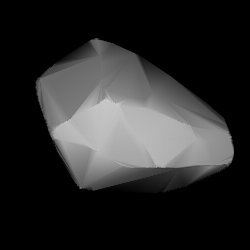
1137 Raïssa is a stony background asteroid and slow rotator, approximately 22 kilometers in diameter, located in the inner regions of the asteroid belt. It was discovered by Grigory Neujmin at Simeiz Observatory in 1929, and named in memory of Raïssa Maseeva, who worked at the Pulkovo Observatory.
1151 Ithaka, provisional designation 1929 RK, is a carbonaceous asteroid from the inner regions of the asteroid belt, approximately 14 kilometers in diameter. It was discovered by Karl Reinmuth at the Heidelberg-Königstuhl State Observatory in 1929, and later named for the Greek island of Ithaca.
1394 Algoa, provisional designation 1936 LK, is a stony asteroid from the inner regions of the asteroid belt, approximately 14 kilometers in diameter. It was discovered on 12 June 1936, by English-born South-African astronomer Cyril Jackson at Union Observatory in Johannesburg, South Africa. The asteroid was named after the historical Algoa Bay.
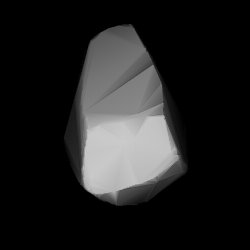
1335 Demoulina, provisional designation 1934 RE, is a stony Florian asteroid from the inner regions of the asteroid belt, approximately 7 kilometers in diameter. Discovered by Karl Reinmuth at Heidelberg Observatory in 1934, the asteroid was named after Prof. Demoulin, a Belgian astronomer at Ghent University. It has a slower-than average spin rate of nearly 75 hours.
1227 Geranium, provisional designation 1931 TD, is a carbonaceous background asteroid from the outer regions of the asteroid belt, approximately 46 kilometers in diameter. It was discovered on 5 October 1931, by German astronomer Karl Reinmuth at the Heidelberg-Königstuhl State Observatory. The asteroid was named for the flowering plant Geranium (cranesbills).

1985 Hopmann is a dark background asteroid in the outer regions of the asteroid belt. It was discovered on 13 January 1929, by astronomer Karl Reinmuth at Landessternwarte Heidelberg-Königstuhl in southern Germany. The asteroid has a rotation period of 17.5 hours and measures approximately 36 kilometers in diameter. It was later named after German astronomer Josef Hopmann (1890–1975).
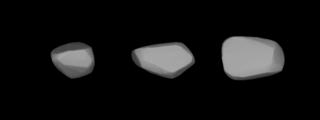
1682 Karel, provisional designation 1949 PH, is a stony Florian asteroid from the inner regions of the asteroid belt, approximately 7.5 kilometers in diameter.
